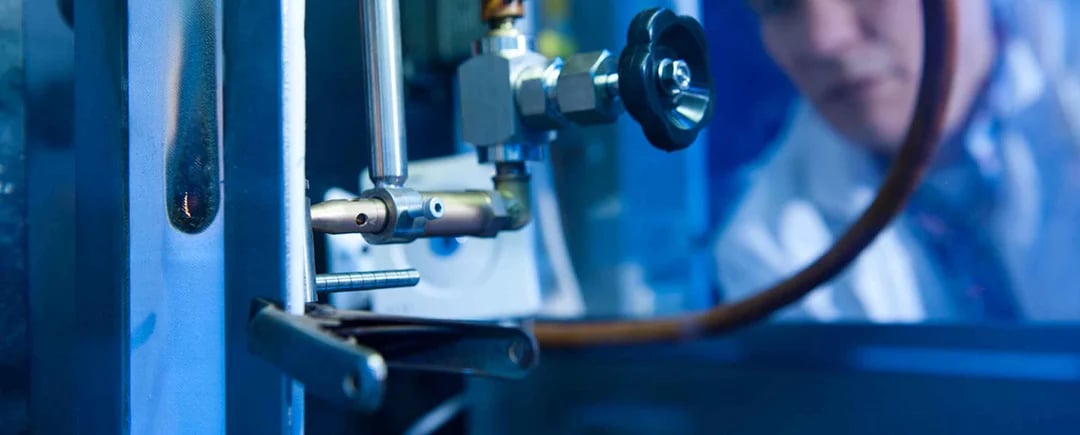FABRIC REQUIREMENTS ACCORDING TO EN ISO 11612
To meet the EN ISO 11612 standard, the protective fabric needs to pass at least two tests: the A test and at least one of the B, C, D or E test. Per test, the performance of the fabric is tested on:
| Test A | flames spread |
| Test B | convective heat |
| Test C | radiant heat |
| Test D/E | molten metal |
| Test F | contact heat |
The test results are classified into ‘performance levels’. Performance level 1 for example, indicates that the fabric provides the minimum protection to pass the test. If you are responsible for the protective clothing of your company, it is advisable not only to look at if a fabric passed a test, but also to what degree.
It is important to understand the different performance levels, because they are related to the size of the risk impact. The three performance levels in the E test for example, tell you something about the protection of different amounts of molten iron splash: E1 stands for 60 to <120 gram molten iron splash and E3 for >200 gram. Depending on the risk levels of your work environment, you need to choose the right performance level.
So the real challenge for you lies in translating lab results into real life... Let us help you with some practical insights.
THE PRACTICE OF THE ISO 11612 STANDARD
The level of protection of your workers is not only determined by the standards. There are quite some elements to mention that can affect your safety level. Hereby we highlight some important insights for you to bear in mind:
- The situation of your worker can differ from the situation of the lab standard
Circumstances applied during the test are never one on one comparable with your workplace. For example, the F index on the contact heat is tested at 250°C temperature, but is this always in line with the actual temperatures in your work environment?
- Your work environment is different
Other risks in your work environment need to be taken into account, as they can affect the risk level of your workers. This can result in the need to extent your protective clothing with other standards to keep your workers safe.
- Top and under garments
Do you know what kind of top or under garments your workers wear, in combination with their protective clothing? Do you, or your workers, know what can happen when someone wears a cotton or 100% synthetic shirt under their protective garment?
CONCLUSION – IT HIGHLY DEPENDS ON YOUR SPECIFIC NEEDS
The EN ISO 11612 is the right start to make sure your protective clothing meets basic heat and flame risk requirements. But the everyday practice of your work environment affects the level of safety of your workers. Always ask for the detailed test results so you can understand how the performance levels are aligned with your practice. Do they cover your workers enough or can you do more to boost your safety culture?
Do you find it hard to understand the test results? Do you need help to determine the additional risk elements that your workplace brings? In that case, ask advice from a protective clothing expert to support you. Schedule here an appointment with one of our advisors to get an objective and customized advice or download the FR Fabrics Guide:




.png?width=399&name=Untitled%20design%20(50).png)



